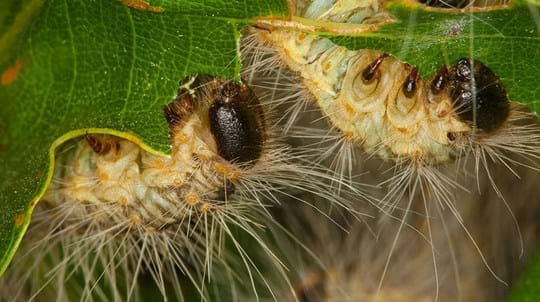
Credit: Nature Photographers Ltd / WTML
Leaves
Oval leaves are thick, very glossy and dark green, measuring 5–12cm x 2–5cm, with finely serrated margins.
Small but pretty, the bay willow is named after its smell and misleading appearance. It’s a lover of damp conditions, and feeder of pollinators and caterpillars.
Common names: bay willow, laurel willow
Scientific name: Salix pentandra
Family: Salicaceae
Origin: native
Bay willow was named because of the similarity of its leaves to the bay tree. Mature trees grow to 18m. The bark is dark grey in colour, with scaly, crossing ridges. Twigs are green-brown, glossy and smooth.
Look out for: the young leaves, which are sticky. Older leaves are shiny. Catkins appear after the leaves.
Identified in winter by: the green-brown, narrow buds which can be sticky.

Credit: Nature Photographers Ltd / WTML
Oval leaves are thick, very glossy and dark green, measuring 5–12cm x 2–5cm, with finely serrated margins.

Credit: Nature Photographers Ltd / WTML
Bay willow is dioecious, meaning that its male and female flowers – which emerge after the leaves in late spring – are produced on separate plants. Male catkins are yellow and female catkins are greenish.

Credit: Blickwinkel / Alamy Stock Photo
After pollination by insects, female catkins develop into a fruit capsule which contains a number of tiny seeds embedded in white down, which aids dispersal by wind.
Other willow species.

Download our free Tree ID app for Android and iPhone to identify the UK's native and non-native trees. It's an A-Z tree guide in your pocket.
Download the appThe bay willow is native to northern Europe and northern Asia. In the UK it is mainly found in Scotland and the north of England, although occasionally it is planted as an ornamental tree in southern England. It favours damp situations, such as beside streams and rivers, wet woodland and boggy ground.
Caterpillars of a number of moth species feed on the foliage, including Ectoedemia intimella. The catkins provide an important source of early nectar and pollen for bees and other insects.
All willows were trees of celebration in biblical times, but this changed over time and today willows are more associated with sadness and mourning. In northern areas, willow branches are used instead of palm branches to celebrate Palm Sunday.
Willows so closely resemble poplars that they are thought to be descended from similar ancestors. In Shakespeare's Hamlet, Ophelia drowns after falling out of a willow tree.
Traditionally, willows were used to relieve pain associated with a headache and toothache. The painkiller Aspirin is derived from salicin, a compound found in the bark of all Salix species. In medieval times in many parts of Europe, the bark was chewed to release the salicin for pain relief.
The bark was also boiled in water and the liquor drunk to relieve diarrhoea, help reduce joint inflammation in arthritis and as a gargle for sore throats. The liquor was also used to stop bleeding, clean wounds and to treat general aches and pains.

Helen Keating • 05 Dec 2022
Transform your home into a woodland wonderland this Christmas with our easy ideas for festive, foraged home decor.
Be inspiredLike other willows, bay willow is susceptible to watermark disease caused by the bacteria Brenneria salicis. Over time, this leads to affected branches dying back and red leaves developing in other parts of the crown. If left untreated, the tree can die.

Shop
We have single trees and tree packs to meet your needs, from wildlife to woodfuel. Delivery is free.
External link

Trees woods and wildlife
Learn more about the pests and diseases threatening our trees. Find out how to spot them, the symptoms and outlook, and how you can help.